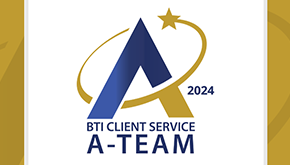Advice from a Business Litigator: 10 Issues to Consider Before Inking the Deal
Business acquisitions present a host of legal issues for corporate counsel to address from a transactional perspective. However, while working through the jungle of transactional details, corporate counsel should pause to consider the deal from a litigation perspective. Using their experience litigating business acquisitions gone awry, the authors of this article offer their top 10 considerations for corporate counsel before inking a deal. By following this checklist, corporate counsel can significantly reduce the risk of costly litigation and increase their companies’ chances of victory in disputes that may arise.
- Pay attention to red flags. It’s easy to get deal myopia after months of negotiations. Don’t fall victim to the sunk-cost fallacy. If something seems off, stop and investigate. And don’t be afraid to call a halt (either temporarily or permanently) to a transaction for a big enough problem. In this regard, outside counsel, accountants and auditors can be especially valuable by providing objective assessments of issues that arise. While types of red flags will vary significantly depending on the nature of the transaction and acquired business, some examples include the following:
- Sellers refusing to disclose or otherwise verify the core aspects of the business (see #2 below).
- Shoddy or incomplete bookkeeping by the target business.
- Requests for the transaction to be structured legally or financially in a manner that does not reflect reality (e.g., requests to “write out” the true owner/seller from the deal or to route payments through third parties).
- Lingering questions about whether and how the core business will proceed post- acquisition.
- Large outstanding liabilities (especially tax, environmental and regulatory liabilities, which will be difficult to avoid through deal structure).
- Verify the fundamentals. Due diligence can be both grueling and mind-numbing. But don’t lose the forest for the trees. You must have confidence in the fundamentals of the business you seek to acquire. If the acquired business is highly regulated, ensure that the company has a consistent record of regulatory compliance, and be sure to request records from all regulators to be certain. If the value of the business is its software, check the code. Whenever possible, involve subject-matter experts in your organization who can validate key business components of the target. Use third parties, nondisclosure agreements and escrow agents to work around confidentiality concerns. Hindsight is 20/20, and should litigation arise after the fact, even the strongest of contracts will not ward off questions from the court (and your board) about why you failed to check the fundamentals before pushing ahead.
- Don’t forget about key third parties. If the acquisition involves key third parties, such as customers, suppliers or other core business partners of the acquired business, make sure these third parties’ contracts are assignable and assumable. If the contract prices, terms or conditions are inconsistent with the importance of, or transactional value ascribed to the third-party relationship as presented by the seller, you need to address the contract before closing the transaction. Make sure the third party has agreed to continue doing business with your company (or the resulting new entity) on prices, terms or conditions that are consistent with your understanding of the deal.
- Negotiate strong representations and warranties. Claims for breaches of representations and warranties are the first and often best claims in litigation over disputed business acquisitions. These claims are generally easier to prove in litigation than other standard claims—such as fraud, unjust enrichment, breach of the implied duty of good faith and fair dealing, and unfair business practices—because they essentially only require proof that the representation and warranty at issue is false. Once you have done everything reasonable to verify the fundamentals, focus on negotiating strong representations and warranties as added protection in these areas. The schedules to the transaction agreement, where the seller will identify items and issues related to the various representations and warranties, are a key consideration in this review. The schedules should confirm your understanding of the business based on the due diligence conducted. Your transactional counsel can help you cover the field.
- Don’t forget indemnification provisions. Generally speaking, most acquisition agreements will contain indemnification provisions to cover breaches of representations and warranties, as well as other possible areas of liability. Just as breaches of representations and warranties will be your go-to claims in any subsequent dispute, indemnification provisions will provide the first pot of funds from which the recovery of those breaches will flow. Strong indemnification provisions will dramatically improve your chances of a quick and sizeable recovery in subsequent disputes. These provisions can vary significantly depending upon the type of acquisition, however, consider the following tips for strong indemnification provisions:
- Mind the cap. Many indemnification provisions contain a cap on total recovery available through indemnification, absent fraud. The elements of fraud in most states (especially the mens rea and reliance elements) make it a relatively difficult claim to prove. Thus, the higher the cap, the better positioned you will be in a dispute.
- Include attorney’s fees and other expenses. Indemnification provisions with expansive definitions of what is covered will be most helpful. Be sure to include attorney’s fees, as well as other likely categories, such as audit costs and expert fees.
- Consider escrow. Indemnification is much easier to collect from a third-party escrow agent than a defendant. Longer escrow periods and higher escrow amounts afford more protection to a buyer.
- Get representations and warranties insurance. This form of insurance adds another layer of protection after strong representations and warranties and indemnification provisions. These policies can apply to a variety of deal structures and are relatively affordable. When disputes arise, these policies can cover litigation expenses as well as business losses, and they can be very financially advantageous. Strongly consider representations and warranties insurance coverage for any large deal.
- Think carefully about deal structure. Your transaction counsel can advise you about the pros and cons of various deal structures, but from a litigation perspective, a key question is, “What happens to the liabilities?” Some liabilities of the target business cannot be avoided, regardless of structure. However, many can. For example, an asset purchase will generally avoid many liabilities that would carry over in a stock purchase or merger structure. If you select a deal structure that comes with more inherited liabilities, be sure to think carefully with your counsel about the nature and extent of these liabilities. Keep in mind that many liabilities—such as regulatory issues, government investigations or private enforcement issues—may not yet have surfaced in diligence. A solid understanding of the target company’s industry and the legal, policy and regulatory issues and risks of that industry will greatly aid in this inquiry.
- Remember the employees. Another source of possible litigation is undisclosed employee issues. If you plan to continue the employment of the seller’s employees, you are also acquiring potential problems with those employees that may either be percolating or systemic. Diligence will show employee claims, including threatened and filed litigation, and charges of discrimination. But you will need to dig deeper to consider issues like internal investigations or hotline complaints that may reveal potential issues at a particular office or facility. In addition, in your meetings with management and employees, don’t forget to ask questions that will assist you in assessing company culture and how that may impact future issues with those employees.
- Acquire the business records. Wherever possible, negotiate to get the business records of the acquired business. On a business level, these records are assets of the company and will help post-deal integration. From a litigation perspective, having the files of the acquired business provides an enormous leg up for your side should disputes arise. With these records, your litigation counsel can complete months of “discovery” before the case is ever filed, and walk into court with the case largely in-hand.
- Consider an arbitration provision. Arbitration provisions are not right for every deal or industry. In particular, high-value deals are often better off litigated in courts, which have greater due process protections and appeal rights. But, if your company operates in a highly regulated environment or one with good deal of risk exposure, arbitration can afford a quicker, less expensive and less public way to resolve disputes.
Though no checklist can be comprehensive, by addressing the issues above, corporate counsel can greatly reduce the risk for their companies (and themselves) in possible business acquisitions. Happy hunting!









































